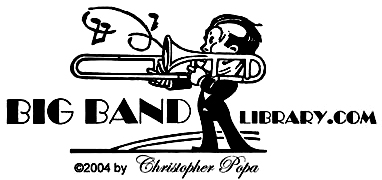
Notes
"Deaths Last Week," Chicago Tribune, Feb. 18, 2001, sec.4, p.8.
"Farewells," Jazztimes, May 2001, p.25.
Feather, Leonard. "Meet the Critics," in The New Yearbook of Jazz (New York, NY: Horizon
Press, 1958), p.97. Rptd. as part of The Encyclopedia Yearbooks of Jazz (New York City:
Da Capo Press, 1993).
Flower, John. Moonlight Serenade: A Bio-discography of the Glenn Miller Civilian Band
(New Rochelle, NY: Arlington House, 1972).
George T. Simon biography. The Big Bands (New York City: Schirmer Books, 1981),
back cover.
"Guide to Collections," University of Colorado at Boulder Library,
libraries.colorado.edu/amrc/guides/simon.htm
"Lifelines: George T. Simon," Billboard, Mar. 3, 2001, p.44.
McDonough, John. "Final Bar: George T. Simon," DownBeat, May 2001, p.22.
"Newsmakers: Swing era's Simon dead at age 88," Detroit News, Feb. 15, 2001, p.2.
"Obituaries: George T. Simon: Journalist, Author and Jazz Musician," Los Angeles Times,
Feb. 2001, p.B6.
"Paid Notice: Memorials: Simon, George T.," New York Times, June 13, 2001, p.15.
Pesselnick, Jill. "Memorial Pays Tribute to Jazz Vet Simon," Billboard, July 7, 2001, p.4.
Polic, Edward F. "Dedication to George T. Simon," in "Glenn Miller Army Air Force Band,"
RCA Bluebird 63852-2, 2001.
Popa, Christopher. Telephone interview of George T. Simon, June 1983.
Ratliff, Ben. "George Simon, 88, a Jazz Critic Who Reviewed the Big Bands," New York
Times, Feb. 16, 2001, p.17.
Simon, George T. The Big Bands (New York, NY: Macmillan, 1967).
---. "Preface," in The Big Bands, 4th Edition (New York: Schirmer Books, 1981), p.xvi.
---. "Preface," in Simon Says:The Sights and Sounds of the Swing Era 1935-1955
(New Rochelle, NY: Arlington House, 1971), p.7.
send feedback about "Critics, Journalists, and Other Writers: George T. Simon" via e-mail
return to "Historical Reference" directory
go to Big Band Library homepage
CRITICS, JOURNALISTS,
AND OTHER WRITERS
GEORGE T. SIMON
an appreciation by Christopher Popa December 2006
". . . one of the important figures among jazz's first generation of informed opinion makers . . . His early writings helped build the early canon of important jazz figures."
- John McDonough
"He was their reviewer, reporter, booster, adviser, confidant, critic, and No.1 fan from their emergence in 1935 as heroes of the pop music scene to well after their demise in 1946-47."
- Amy Lee, The Christian Science Monitor
"Though his criticism tended to be more eyewitness journalism than musicology, his insight went beyond the surface."
- Ben Ratliff, The New York Times
George Thomas Simon, ca. 1967
photo by Neshui Ertegun
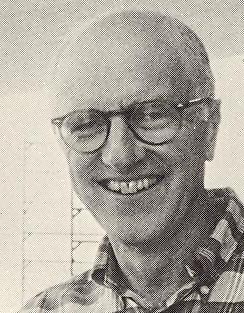
Born on May 9, 1912 in New York City as the son of a milliner[ Obit LAT ], he became a famous writer and producer... and an inspiration to me. When I was first becoming interested in music, it was George T. Simon's book, The Big Bands (and Leonard Feather's The Encyclopedia of Jazz) that I sought out everytime I went to my hometown public library.
Simon, at one time, had been a musician, who studied piano, took drum lessons from Gene Krupa and Bill West, and learned about harmony from Otto Cesana.[ Feather ]
While attending Harvard University from 1930-34[ Feather ], he led his own band, called the Confederates, "because," as he later joked, "we didn't belong to the union."[ Simon, Preface ]
In February 1935[ Simon, Preface ] Simon joined the staff of Metronome, hired at $25 a month. Within a short time, the focus of the magazine changed from articles on instrument-making and publishing to items about big bands.[ Obit LAT ]
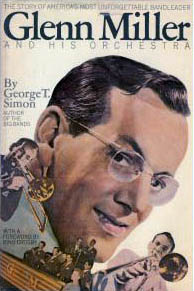
In retrospect, Simon was credited with aiding the careers of many dance band leaders and singers, including Glenn Miller, Elliot Lawrence, and Dinah Shore.[ Feather ] In particular, his friendship with Miller proved to be an especially important one and began early on.
In the spring of 1934, Simon saw the new Dorsey Brothers Orchestra in Massachusetts. Impressed with the group, he became friends with Miller, who was the band's organizer, arranger, and one of its trombonists.
A few years later, when Miller put together his own group for a one-shot Decca recording session on March 22, 1937, he asked Simon to help find musicians and play drums for the date.[ Flower ] They made Peg O'My Heart, Wistful and Blue, How Am I to Know?, Moonlight Bay, I'm Sitting On Top of the World, and Anytime, Anyday, Anywhere. But Miller was unimpressed, and suggested that Simon concentrate on his writing.
Simon went on, but didn't confine his pen to the pages of Metronome.
Sometimes under the pseudonym "Buck Pincus," he wrote song lyrics for Duke Ellington and Alec Wilder.[ Obit LAT ] And, later, Simon had his own music publishing company.[ Polic ]
Starting in 1939, he began activity in the recording industry, as supervisor of the Metronome all-star sessions.[ Feather ]
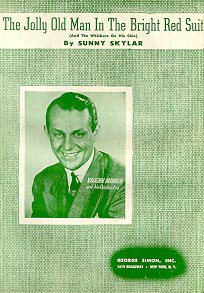
Years later, Simon recalled when trombonists Tommy Dorsey and Jack Teagarden were on the same '39 date, and he asked T.D. to play a jazz solo.
"Nothing doing," Tommy said. "What business have I got playing jazz when Jack is in the room?"
[ Simon, DB ]
Following Dorsey's sudden death in 1956, Simon wrote a tribute to him, which appeared in Down Beat.
"Tommy left the world a great deal," he reminisced. "His music, of course, the greatest mixture of sweet and swing ever produced by any one orchestra."[ Simon DB ]
published by "George Simon, Inc."
Who's reviewing who? One late '30s photo
[ l. ] seems to show bandleader Larry Clinton holding a pen and writing a critique of Simon, rather than the other way around.
Simon praised Clinton, but didn't do the same for certain other sweet dance orchestras.
"Strictly commercial and sterile bands and singers bored me . . . and so what little I did write about them wasn't especially inspired," Simon admitted in 1971.[ Simon, Preface, Simon Says ] "On the other hand, jazz musicians and musicianly popular music creators, including some who careers I could report from their inception, have alwas intrigued me."
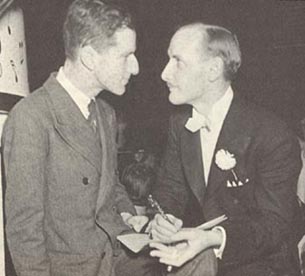
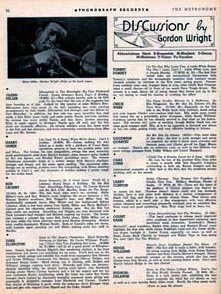
Rather than credit all the articles he wrote for each issue to him, other names were concocted, to make it appear as though there was a large editorial staff.
"So I also became Gordon Wright and Henry S. Cummings, who wrote record reviews, radio columnist Arthur J. Gibson, reporters Peter Embry and Joe Hanscom, and author of a lengthy, rambling column, filled with inside 'scoops,' gossip, and opinions, called 'The Diary of Our Own Jimmy Bracken,'" he once explained.[ Simon, Preface ]
He was named associate editor[ McDonough ] and, in 1939, became editor-in-chief, a position which he held for sixteen years[ Obit LAT ], except for time in the Army, when Barry Ulanov assumed his duties.[ Simon, Preface ]
After Glenn Miller enlisted the service in World War II, Simon wrote to him, volunteering his services doing organizational work (and possibly playing drums). Miller responded positively, and he entered the service in February 1943. Following basic training in Atlantic City, New Jersey, he was stationed at Yale University in New Haven, Connecticut, working on the post newspaper, The Beaver. He also played drums with Miller's marching band, alongside Ray McKinley, and, in fact, was relief drummer on the July 31, 1943 "Uncle Sam Presents" recording and "I Sustain the Wings" broadcast. On his own time, he looked for and contacted musicians at other posts on Miller's behalf. But when Miller built up his own Army Air Force Orchestra, which eventually went to England, Simon remained with the 418th AAF Band (renamed the 718th AAF Band).[ Polic CD ]
Still, Simon continued a busy schedule, producing many of the jazz recordings issued as
V-Discs to American servicemen overseas. Among the sessions he supervised was the first recording by trumpeter Clark Terry.[ Ratliff ]
And Simon served as producer - writer for the NBC radio show "For the Record" during 1944-45, and produced weekly jam sessions at the Stage Door Canteen.[ Feather ]
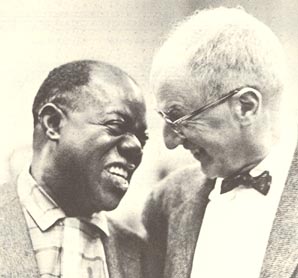
From the mid and late 1940s into the '50s, in spite of the emergence of be-bop, Simon continued his loyalty to swing music.
Subjects of his articles in Metronome during that period included Louis Armstrong [ l. ], Ray McKinley, Benny Goodman, Stan Kenton, Ted Weems, Claude Thornhill, Duke Ellington, Buddy Rich, Artie Shaw, and The Dorsey Brothers.
In fact, in the February 1948 issue of Metronome, he wrote a piece, "Simon Blows His Top---About Bop: Too Many Guys Are Getting Too Infatuated with the Sound of Their Own Notes and Not Paying Enough Attention to Musicianship."
Simon's last Metronome all-star recording session was in 1953, but he went on to run recording sessions and / or compile reissues for Grand Award, Jazztone, RCA Victor, Reader's Digest, and the Franklin Mint Society, and was president of the record production company Bouree Productions from 1958-60.[ Pesselnick ]
For one of those RCA Victor reissues, the deluxe, five-record "Glenn Miller Army Air Force Band" ( LPT-6702 ) in 1955, he chose the selections and wrote the accompanying booklet. The long-awaited compact disc release of the album, in October 2001, was dedicated to him.
[ Polic CD ]
He also spearheaded "Glenn Miller: A Legendary Performer" ( CPM2-0693 ), a 2-record set of previously-unreleased, historic broadcast performances, issued in 1974.
Three years later, when singing legend Bing Crosby was to be represented on his own "Legendary Performer" LP ( CPL1-2086e ), Bing personally selected him to work on it, and Simon wound up winning a Grammy Award for best album liner notes.[ Obit LAT ]
More LP Liner Notes by George T. Simon - select list
"McKinney's Cotton Pickers," RCA Victor LPT-24, 1952
"Artie Shaw In the Blue Room / In the Cafe Rouge," RCA Victor LPT-6000, 1953 [ boxed set ]
= "Artie Shaw In the Blue Room / In the Cafe Rouge," RCA Victor LPT-6000, 1961 [ gatefold cover ]
"Glenn Miller Concert: Vol.III," RCA Victor LPT-3001, 1953
"This Is Glenn Miller and His Orchestra," RCA Victor LPT-3002, 1953
"This Is Tommy Dorsey and His Orchestra," RCA Victor LPT-3005, 1953
"Count Basie," Brunswick BL 54012, 1955
"Frankie Carle's Finest," RCA Victor LPM-1153, 1956
"The Sound of Glenn Miller," RCA Victor LPM-1189, 1956
"This Is Glenn Miller," RCA Victor LPM-1190, 1956
"Tommy Dorsey: Yes Indeed!," RCA Victor LPM-1229, 1956
"Tommy Dorsey: Hawaiian War Chant," RCA Victor LPM-1234, 1956
"Artie Shaw and His Gramercy Five," RCA Victor LPM-1241, 1956
"Artie Shaw: Moonglow," RCA Victor LPM-1244, 1956
"Mr. Benny Goodman Plays . . . The Benny Goodman Story," Capitol S-706, 1956
"Lionel Hampton's All-Star Jazz Groups," Jazztone J 1246, 1956
"Fats Waller Plays and Sings," Jazztone J 1247, 1956
"The Elliott Lawrence Band Plays Gerry Mulligan Arrangements," Fantasy 3-206, 1956
"Les Brown: All-Weather Music," Coral CRL 57039, 1956?
"Two Sides of Claude Thornhill and His Orchestra," Kapp KL 1058, 1957
"Glenn Miller Army Air Force Band: Marvelous Miller Moods," RCA Victor LPM-1494, 1957
"The New Glenn Miller Orchestra in Hi-Fi," RCA Victor LPM-1522 / LSP-1522, 1957
"Hits of the 30's," RCA Camden CAL-370, 1957
"Great Jazz Brass," RCA Camden CAL-383, 1957
"The Metronome All-Star Bands," RCA Camden CAL-426, 1958
"The New Glenn Miller Orchestra: Something, Old, New, Borrowed and Blue," RCA Victor
LPM-1678 / LSP-1678, 1958
"Glenn Miller: The Marvelous Miller Medleys," RCA Victor LOP-1005, 1958 = LPM-1973, 1960
"On Tour with The New Glenn Miller Orchestra," RCA Victor LPM-1948 / LSP-1948, 1959
"Artie Shaw Swings Show Tunes," RCA Camden CAL-515, 1959
"Elliott Lawrence: Dream On--Dance On," Fantasy 8002, 1959
"Maynard Ferguson: Newport Suite," Roulette R 52047 / SR 52047, 1960
"First Time!: The Count Meets the Duke," Columbia, 1961 [ with Stanley Dance ]
"The Authentic Sound of the New Glenn Miller Orchestra - Today," RCA Victor LPM-2270 /
LSP-2270, 1961
"A Rare Batch of Satch: The Authentic Sound of Louis Armstrong in the '30s," RCA Victor
LPM-2322, 1961
"The New Glenn Miller Orchestra: Glenn Miller Time," RCA Victor LPM-2436 / LSP-2436, 1961
"Woody Herman: The Thundering Herds," Columbia C3L-25, 1963
"Gene Krupa: Drummin' Man," Columbia C2L-29, 1963
"Glenn Miller On the Air," RCA Victor LPM-6101 / LSP-6101e, 1963
= "Glenn Miller On the Air, Volume 1," RCA Victor LPM-2767 / LSP-2767(e), 1963; "Glenn Miller On the Air, Volume 2,"
RCA Victor LPM-2768 / LSP-2768(e), 1963; and "Glenn Miller On the Air, Volume 3," RCA Victor LPM-2769 / LSP-2769(e), 1963
"Ray Noble," RCA Vintage Series LPV-536, 1967
"Bob Crosby and the Bobcats and Orchestra: Their Greatest Hits," Decca DL 4856, 1967
"Woody Herman: 'The Turning Point' 1943-1944," Decca DL 79229, 1967
"Glenn Miller: The Chesterfield Broadcasts," RCA Victor LPM-3873 / LSP-3873e, 1967 [ with Brad McCuen ]
"Glenn Miller: The Chesterfield Broadcasts, Volume 2," RCA Victor LPM-3981 / LSP-3981e, 1968
"The Unforgettable Glenn Miller," Readers Digest RD-64, 1968
"Frankie Carle: Era: The 30's," Dot DLP 25847, 1968
"Frankie Carle: Era: The 40's," Dot DLP 25877, 1968
"Frankie Carle: Era: The 50's," Dot DLP 25928, 1969
"This Is Benny Goodman," RCA Victor VPM-6040, 1971
"This Is Tommy Dorsey, Volume II," RCA Victor VPM-6064, 1972
"This Is Sammy Kaye," RCA Victor VPM-6070, 1972
"This is Guy Lombardo," RCA Victor VPM-6071, 1972
"This Is Freddy Martin," RCA Victor VPM-6072, 1972
"The Best of the Glenn Miller Orchestra," Columbia House DS-920, 1972
"This Is Tommy Dorsey and His Clambake Seven," RCA Victor VPM-6087, 1973
"The Uncollected Harry James and His Orchestra 1943-46," Hindsight HSR-102, 1977
"The Uncollected Glen Gray and the Casa Loma Orchestra 1939-40," Hindsight HSR-104, 1977
"The Uncollected Claude Thornhill and His Orchestra 1947," Hindsight HSR-108, 1977
"Guy Lombardo: A Legendary Performer," RCA CPL1-2047, 1977
"The Uncollected Les Brown and His Orchestra: Vol.2, 1949," Hindsight HSR-131, 1978
"The Uncollected Les Brown and His Orchestra: Vol.3, 1949," Hindsight HSR-132, 1978
"Giants of Jazz: Benny Goodman," Time-Life STL J05, 1979 [ with Frank K. Kappler ]
"Charlie Spivak Now!," Circle CLP-17, 1981
Simon was a consultant for network television and radio,[ Simon bio ] writing for many tv specials after 1955, including "America's Greatest Bands," "The Music of Gershwin," and "Look Up and Live." Also, he was writer and associate producer for the Timex all-star tv jazz shows in 1957-58.[ Feather ]
He was the executive director of the New York chapter of the National Academy of Recording Arts and Sciences (NARAS) from 1958 to 1976, and later served as a consultant.
[ Pesselnick ]
Also, he worked on the advisory board for the New York Jazz Festival.[ Lifelines ]
And he served as a critic for the The New York Post and The New York Herald Tribune in the 1960s.[ Ratliff ]
To mark Frank Sinatra's first twenty-five years, Simon wrote in 1965 an in-depth review, "The Sinatra Report," for Billboard. Of all his published works, he was said to have been most proud of this.[ Polic CD ]
He won the first Deems Taylor / ASCAP award.[ Simon bio ]
Yet it was Simon's work, The Big Bands, published by Macmillan in 1967, that exposed his name to perhaps its largest audience, including me.
Praise for The Big Bands
"The definitive volume in its field."
- The Los Angeles Times
" . . . stirringly evocative of the fervid period when so many groups (Simon mentions some 450) 'swung freely and joyously,' filling listeners with 'an exhilarated sense of friendly well-being.'"
- Time
"It is a fat slice of pure nostalgia for everyone who is old enough to remember the big band era and a good source book of information for anyone interested in those times."
- The New York Post
He completed a third edition, published in 1974, which included new interviews of Benny Goodman, Woody Herman, Harry James, Stan Kenton, Guy Lombardo, and Artie Shaw. Simon stated that the only other leader he wanted to speak with, Duke Ellington, declined. (A fourth, and final, edition, was published in 1981.)
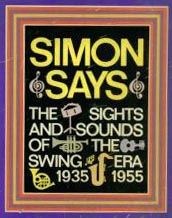
Additional Books by George T. Simon
Don Watson Starts a Band (New York City: Dodd, Mead and Company, 1940)
Ralph Flanagan: The Bandleader (New York City: Flanagan, Woods and
Hendler, 1950)
The Feeling of Jazz (New York City: Simon & Schuster, Inc., 1961)
Simon Says: The Sights and Sounds of the Swing Era 1935-1955 (New Rochelle,
NY: Arlington House, 1971)
Glenn Miller and His Orchestra (New York City: Thomas Y. Crowell, 1974)
The Big Bands Songbook (New York City: Thomas Y. Crowell Company, 1975)
The Best of the Music Makers (Garden City, NY: Doubleday & Company, Inc.,
1979)
The Big Bands Trivia Quiz Book (New York City: Barnes & Noble Books, 1985)
Other Writing - Select List
"'Be Terrible,'" New York Times Book Review, June 11, 1989, p.728 [ book review of Ish Kabibble: The Autobiography
of Merwyn Bogue ]
"The Sinatra Report," Billboard, Nov. 20, 1965, supplement pp.1S-92S
"Tommy Dorsey: The Impatient One." DownBeat, Jan. 9, 1957, p.13
Simon never lost his interest in big band music.
On December 23, 1974, around the 30th anniversary of Glenn Miller's disappearance, Simon appeared on NBC's "Today" morning show, with a member of Miller's band in 1941-42, cornetist Bobby Hackett, and the then-present "official" Glenn Miller Orchestra directed by trombonist Buddy Morrow.
Simon continued to write liner notes for records and, later, CDs, including "Arthur Fiedler and The Boston Pops Play Glenn Miller's Biggest Hits," RCA Red Seal, 1969; "John Williams and The Boston Pops: Swing Swing Swing," Phillips, 1985; "Glenn Miller Live!," Reader's Digest, 1987; and "Benny Goodman: The Birth of Swing (1935-1936)," RCA Bluebird, 1995 (the latter with musician-historian Loren Schoenberg).
He had a radio show called "World of Jazz" on WQXR in New York City from 1955-57
[ Feather ], and was in 2000 putting together a syndicated big band radio program.[ Polic ]
Several years before that, he donated a collection of printed materials to the University of Colorado at Boulder. The items include correspondence "to and from Glenn Miller and family and friends; articles by Simon on Glenn Miller; proofs of Simon's book Glenn Miller and His Orchestra plus photos used in [ the ] book; [ and ] correspondence and reviews about [ that ] book."
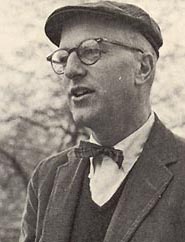
Nor did he, once and for all, stop playing drums like Glenn Miller had urged; he still played in his own little jazz group in New York City nightclubs.[ Polic ]
Simon died at age 88 on February 13, 2001. The cause of death was pneumonia, following a battle with Parkinson's disease.[ Obit LAT ]
A memorial service celebrating his life was held at St. Peter's Church in New York City on June 14, 2001.[ Paid Notice ]
He was survived by his wife of fifty-three years, Beverly Jean Simon; a daughter, Julie Ann Simon of Oakland, California; a son, Thomas Simon of New York City; and three grandchildren.[ Ratliff ]
One of Simon's brothers had been a music critic for PM and wrote several books about classical music; another brother had been director of light music at radio station WQXR; and a cousin, Robert, was a music critic for The New Yorker for twenty-five years.[ Feather ]
A portrait of George T. Simon
by Richard L. Simon